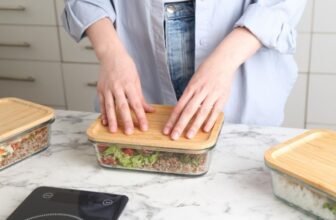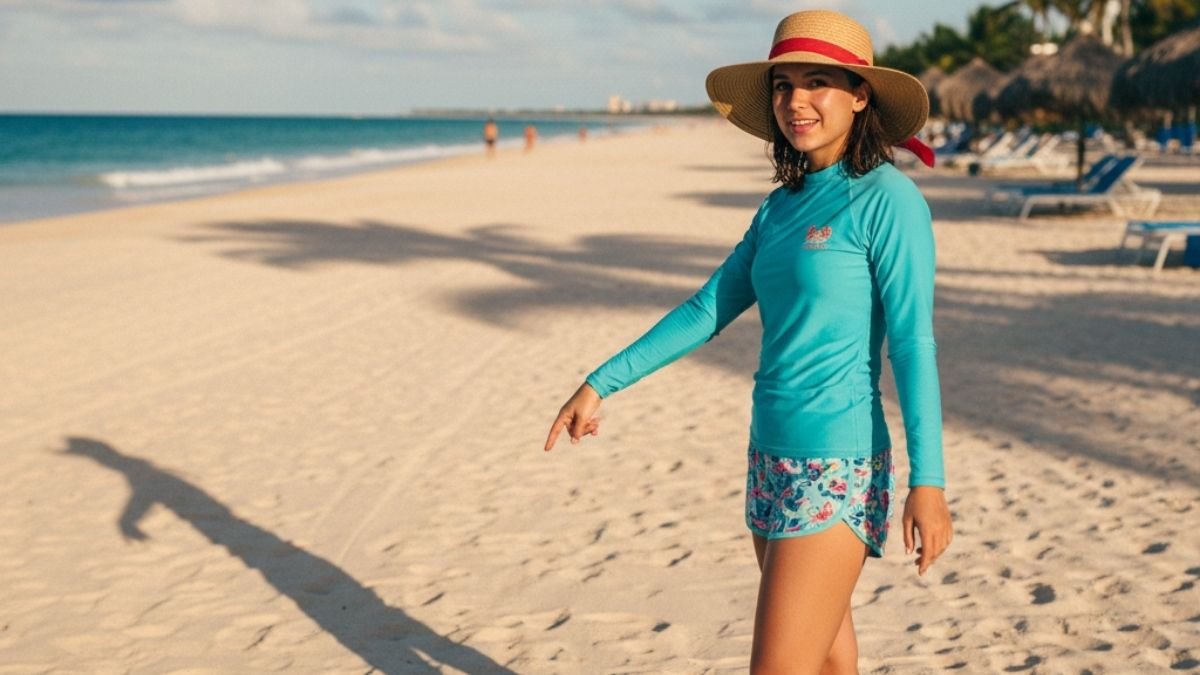
You’re at a park, a backyard barbecue, maybe just walking the dog. The sun is playing peek-a-boo with the clouds, and it doesn’t even feel that hot. And the question pops into your head: Do I really need to worry about sunscreen right now?
We’ve all been there. Sun safety can feel complicated. There are numbers to remember (SPF 30, 10 a.m. to 4 p.m.), rules to follow, and a little voice in our head that wonders if we’re being overly cautious.
But what if you had a built-in, foolproof sun safety alarm that you carry with you everywhere? No apps, no weather reports, no guessing.
Good news: you do. Just look down.
Your shadow is the simplest, most ancient, and most accurate tool you have for gauging your real-time sun risk. It’s a trick our ancestors could have used, and modern science confirms it’s one of the smartest things you can do for your skin. Here’s how to use it—and why it works.
So, What’s the Big Deal with the Sun, Anyway?
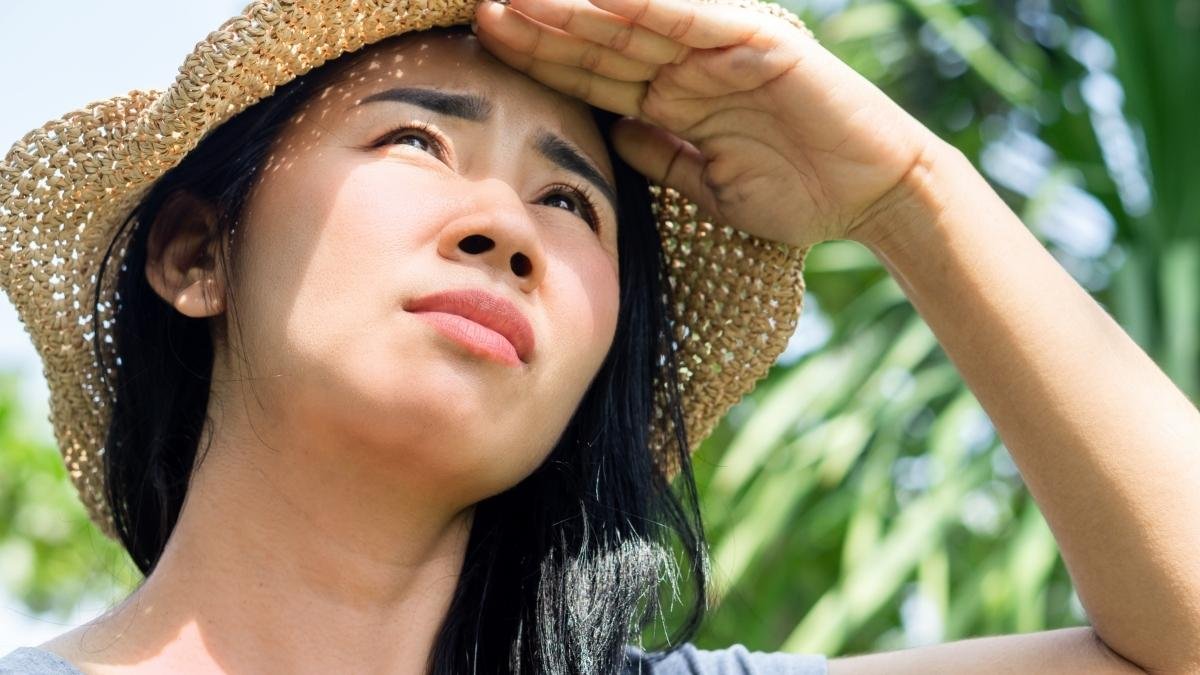
Before we get to the trick, let’s have a quick, honest chat about what we’re up against. The sun emits invisible energy called ultraviolet (UV) radiation, and it comes in a few flavors.
Think of it this way:
- UVA rays are the silent, sneaky ones. They’re present all day, every day, even on cloudy days. They penetrate deep into your skin, causing long-term damage like wrinkles and sagging (a process called photoaging), and they are a major driver of skin cancer.
- UVB rays are the loud, obvious ones. They’re the primary cause of sunburn. Their intensity changes throughout the day, peaking when the sun is highest in the sky.
When these rays hit your skin, they act like tiny bullies, breaking into your skin cells and damaging their DNA. Your body has an amazing repair crew that tries to fix this damage. But when the bullies show up too often (every time you’re in the sun unprotected), the repairs can get sloppy. Those mistakes in the DNA code can build up over time, leading to mutations that can eventually become skin cancer.
There are a few types, but the main ones to know are Basal Cell Carcinoma (BCC) and Squamous Cell Carcinoma (SCC), which are very common and highly treatable when caught early. The one we really have to be vigilant about is melanoma. It’s much rarer, accounting for only about 1% of cases, but it’s responsible for the vast majority of skin cancer deaths because it can spread to other parts of the body.
Honestly, the numbers are a bit shocking. One in five Americans will develop skin cancer by the age of 70. And in the U.S., more than two people die from it every single hour. This isn’t to scare you, but to ground you in the reality that this is something we all need to take seriously. As surgical oncologist Dr. Jeffrey M. Farma puts it, “When it comes to skin cancer, prevention is key… even a small skin lesion can quickly escalate into a very serious issue”.
The Trick You’ll Never Forget: Meet the Shadow Rule
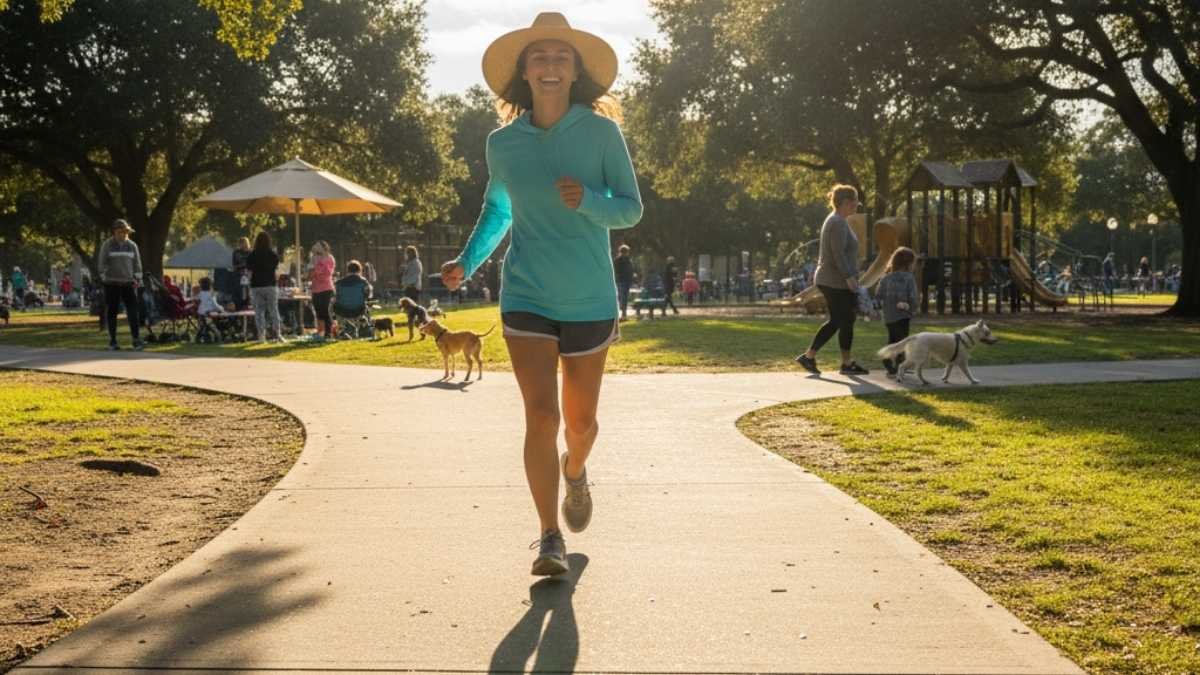
Okay, so how do you know when the sun is actually at its most dangerous? Forget the clock. Forget the app. Just look down at your feet.
The rule is this simple: If your shadow is shorter than you are, the sun’s rays are at their peak. It’s time to seek shade and protect yourself.
That’s it. If your shadow is taller than you, the risk is lower.
This isn’t just an old wives’ tale; it’s rooted in simple physics. Think of the Earth’s atmosphere as a giant, protective blanket. In the early morning and late afternoon, the sun is low in the sky. Its rays have to travel a long, slanted path through that blanket, so much of the harmful UV radiation gets filtered out.1
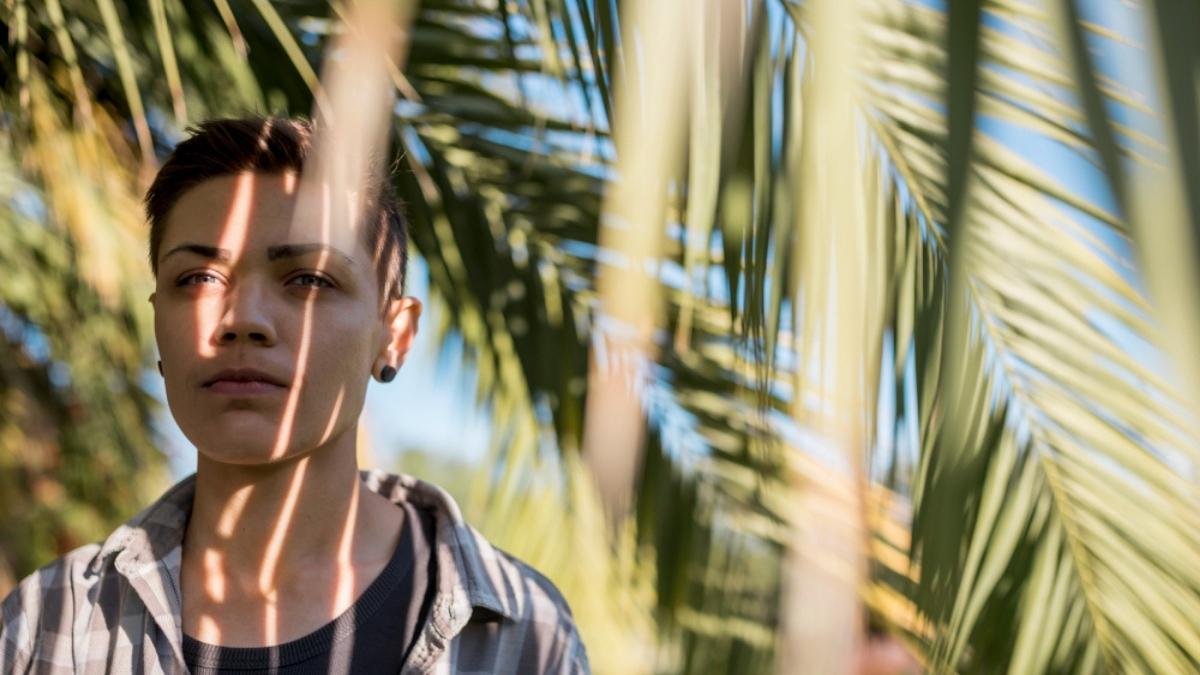
But when the sun is high overhead, its rays take the shortest, most direct path to you. They punch straight through the thinnest part of the atmospheric blanket with full force. Your short shadow is just a perfect, real-time visual cue that the sun is in that high-danger zone.
Scientists have even pinpointed the exact moment the danger ramps up. It’s when the sun is more than 45 degrees above the horizon—the precise point at which your shadow becomes shorter than you are tall. And get this: studies have shown that the amount of sunburn-causing UV radiation you’re exposed to during this “short shadow” period is roughly five times greater than the exposure you get during the rest of the day combined.
☀️ The Simple Shadow Rule for Sun Safety 🌤️
Okay, But Does It Actually Work? (And When It Doesn’t)

You might be thinking, “Really? I can just eyeball this?” It sounds almost too simple to be true.
Well, researchers had the same question. So they designed a study to test it on a group of 76 ten-year-old children. They taught them the rule—”Short shadow? Seek shade!”—and then took them outside to see if they could apply it. The result? The kids correctly interpreted the rule 92% of the time. The takeaway is pretty clear: if a ten-year-old can nail it, we definitely can.
The study did find one tricky spot: the kids had the most trouble when their shadow was exactly their height. This gives us a valuable piece of advice: When in doubt, play it safe. If you’re not sure if your shadow is shorter or about the same size, it’s time to protect yourself.
Now, for the really important part. The Shadow Rule is an incredible tool, but it has a kryptonite. It’s crucial to know when not to use it.
- The Big Exception: Reflective Surfaces. The rule is designed to measure direct UV rays coming from the sun. It can’t account for rays that bounce. Surfaces like snow, sand, water, and even concrete act like giant mirrors, reflecting UV radiation at you from all angles—even when you’re sitting under an umbrella. Snow can reflect up to 88% of UV rays. This is why you can get a terrible burn on a ski trip or a beach day, even if you spend most of your time in the shade.
- The Bottom Line: When you’re on or near snow, sand, or water, the rule is to ignore your shadow and assume the UV risk is high all day long.
- The Cloudy Day Dilemma. We’ve all heard stories of getting the worst sunburn on an overcast day. That’s because up to 80% of UV rays can penetrate through clouds. If you can still see a discernible shadow, the rule still works! But on those thick, gray days where you don’t cast a shadow at all, the rule is useless. On those days, you have to rely on the UV Index forecast and the general knowledge that you still need protection.
Your Complete Sun-Safety Playbook
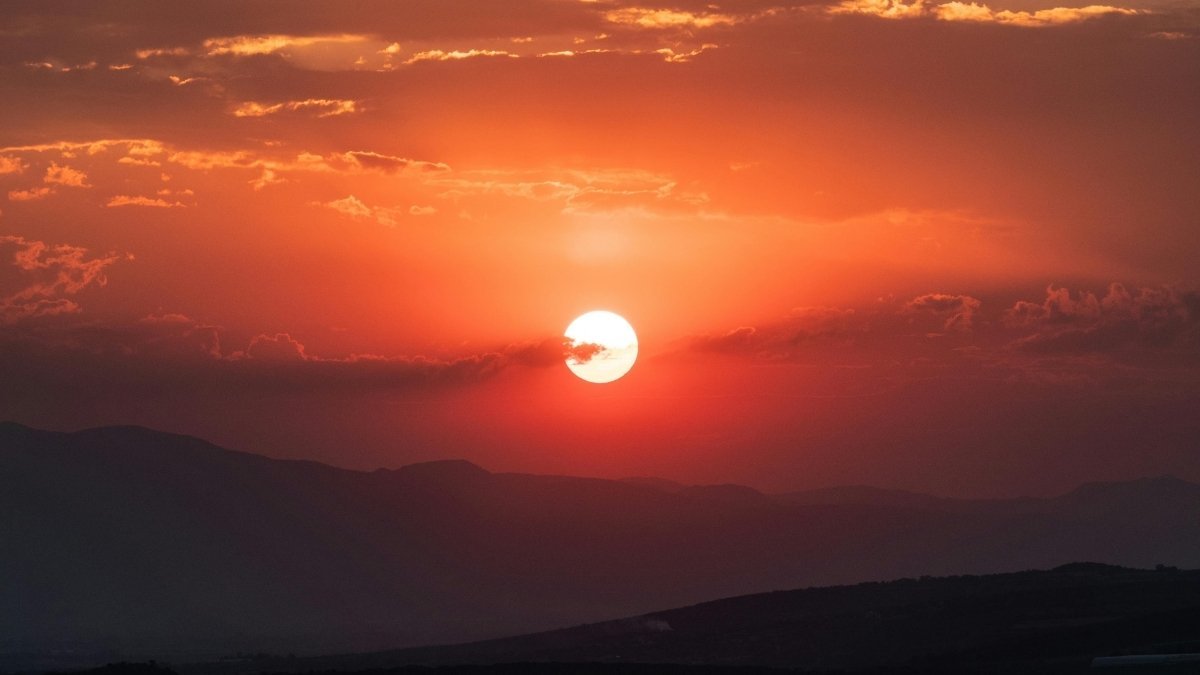
Think of your short shadow as an alarm bell. It’s the trigger that tells you it’s time to deploy your full sun-defense strategy. It’s not about just one thing; it’s about layering your protection.
1. Seek Shade (The Obvious First Step)
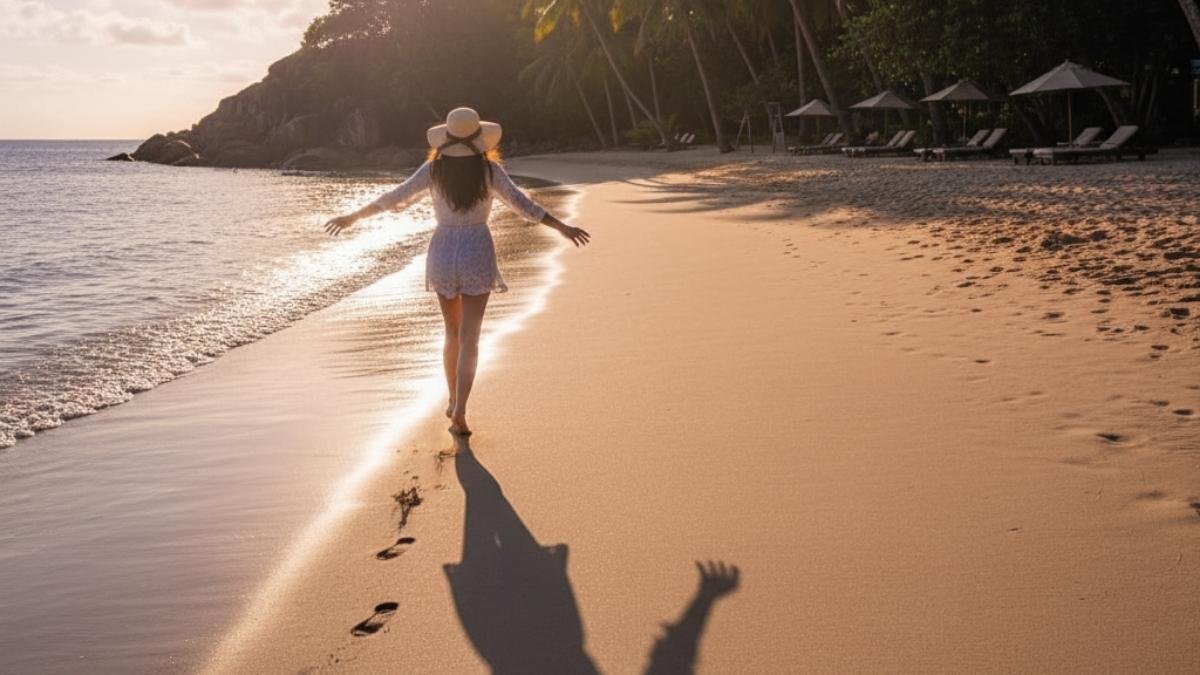
Your short shadow is literally telling you to find a longer one—under a tree, an awning, or an umbrella. This is the simplest and most effective move you can make during peak hours.
2. Cover Up (Your Most Reliable Defense)

Honestly, clothing is your best friend. It doesn’t wear off, and you can’t apply it incorrectly. But not all clothing is created equal. That thin, white cotton t-shirt? It might have an Ultraviolet Protection Factor (UPF) of only 7, which drops to 3 when it’s wet, offering almost no protection
- Look for UPF 50+ clothing. This is the gold standard, blocking 98% of UV rays. It’s a one-time investment that provides consistent, reliable protection for your torso, arms, and legs.
3. Slap on a Hat (The Right Kind)
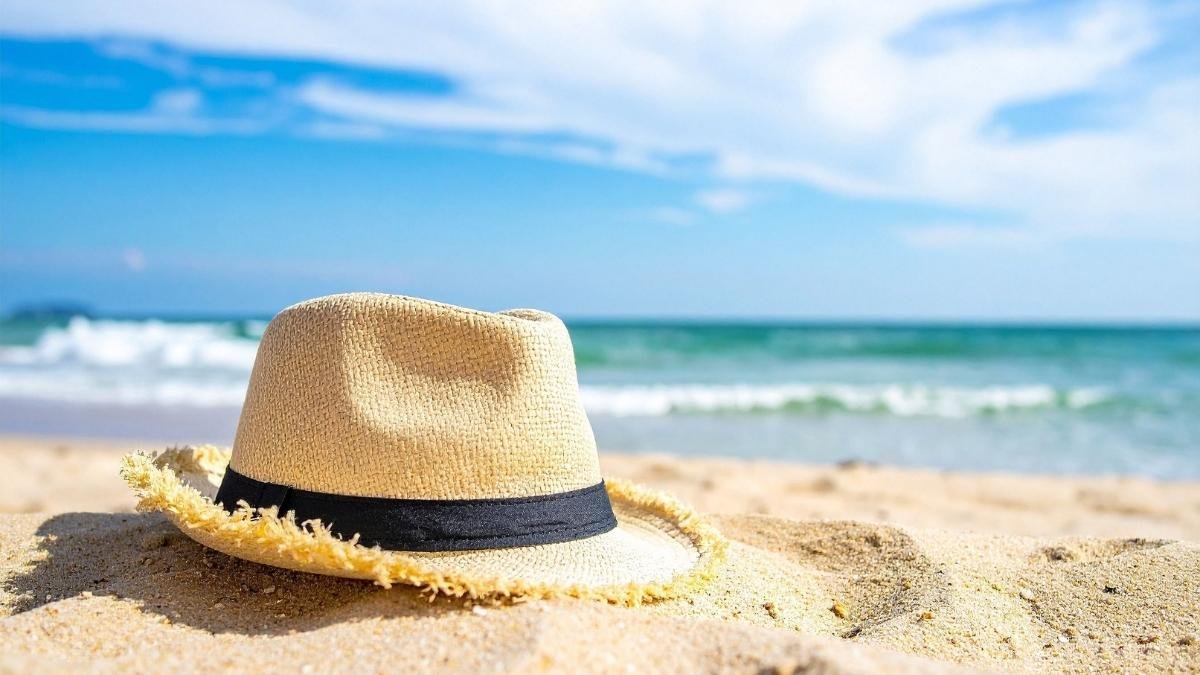
And no, a baseball cap doesn’t cut it. It leaves your ears and the back of your neck—two very common spots for skin cancer—completely exposed. You want a hat with a wide brim (at least three inches) all the way around.
4. Slide on Sunglasses (Don’t Forget Your Eyes)
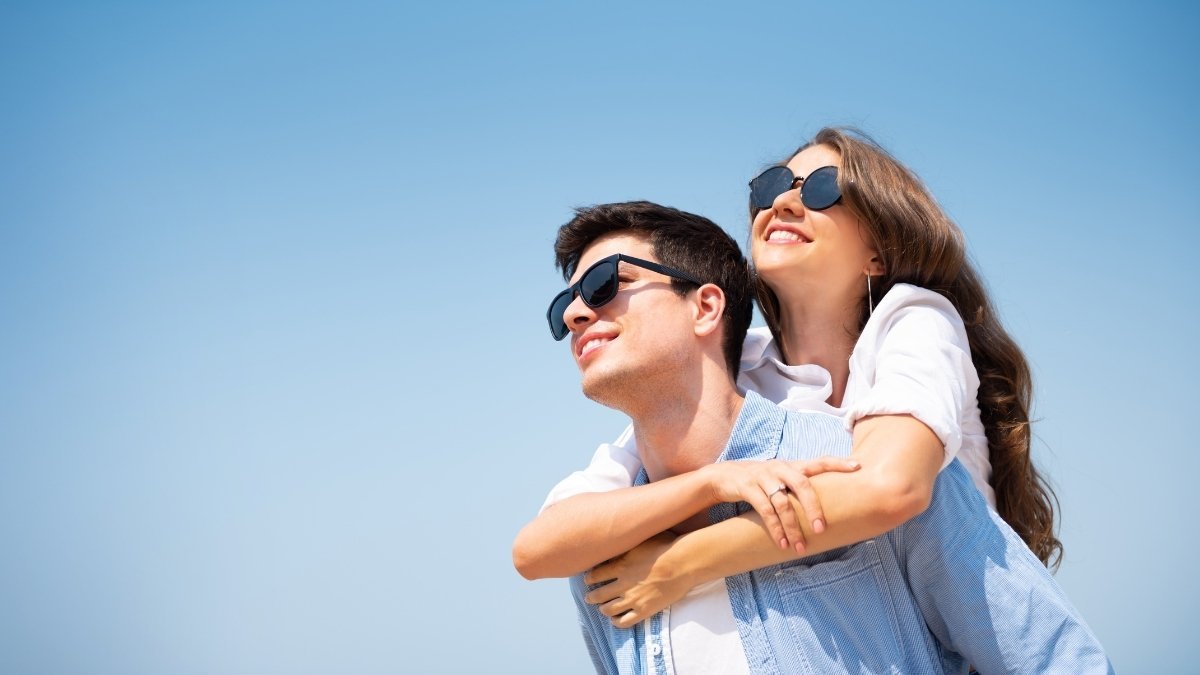
Your eyes and the delicate skin around them need protection, too. UV exposure is a leading cause of cataracts. Look for sunglasses labeled UV400 or 100% UVA/UVB protection. Wraparound styles are even better because they block rays from sneaking in the sides.
5. Slop on Sunscreen (The Final, Essential Layer)
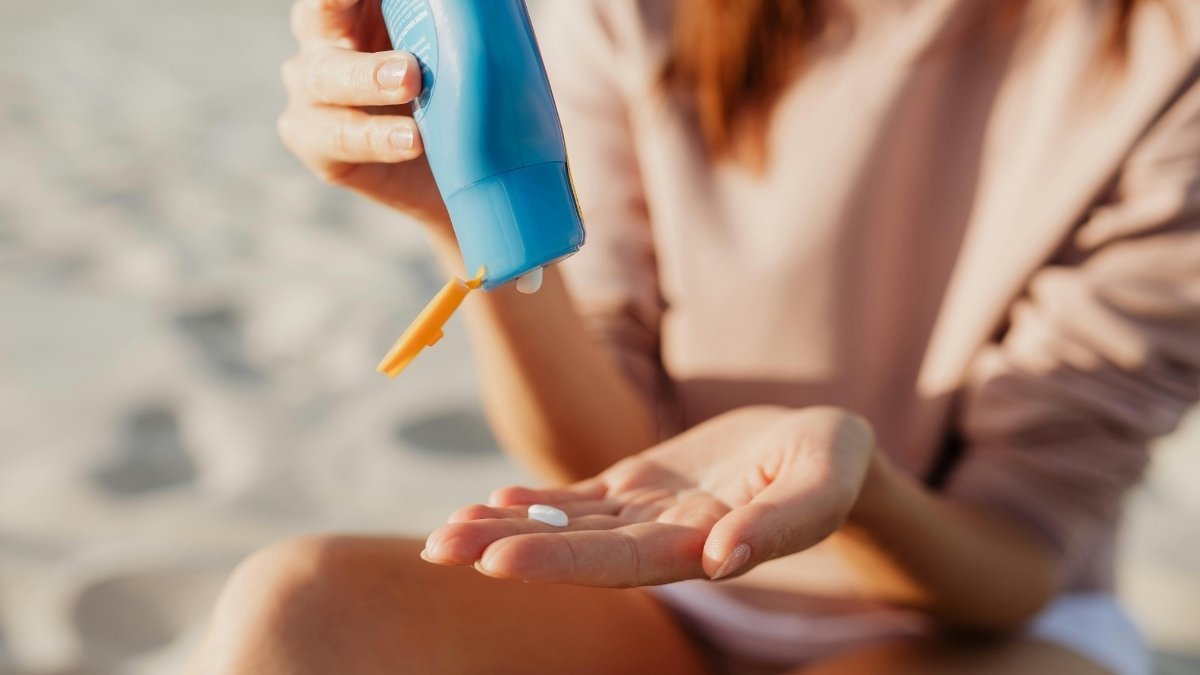
For any skin that’s still exposed, sunscreen is non-negotiable. But most of us are doing it wrong.
- Choose the Right Stuff: Look for Broad-Spectrum (meaning it protects against both UVA and UVB) and SPF 30 or higher. Water resistance is a must if you’ll be swimming or sweating.
- Use Enough! This is where almost everyone fails. You need about one ounce—a full shot glass—to cover the exposed parts of your body. For your face, a good guide is the “two-finger rule”: squeeze a line of sunscreen down your index and middle fingers, and that’s the amount you need for your face and neck.
- Reapply, Reapply, Reapply. Sunscreen is not a one-and-done deal. You need to reapply it at least every two hours, and more often if you’ve been swimming, sweating, or towel drying. This is the step people forget, and it’s often why they still get burned.
Here’s a quick comparison of how these methods stack up:
☀️ A Realistic Look at Your Sun Protection Options 🛡️
How It Works
Physically blocks direct sun.
How Well It Works
Good, but variable.
The Catch
Doesn’t block **reflected UV** from sand/snow/water. You have to move as the sun moves.
How It Works
Creates a **physical barrier**.
How Well It Works
**Excellent** and consistent.
The Catch
Only protects the skin it covers. It can be less effective if **stretched or wet**.
How It Works
Absorbs or reflects UV rays.
How Well It Works
Good, but **totally depends on you**.
The Catch
Huge potential for **user error**: not using enough, missing spots, forgetting to reapply.
How It Works
A **real-time behavioral cue** (if your shadow is shorter than you, the sun’s rays are strongest).
How Well It Works
A **great alarm bell**.
The Catch
Only tells you *when* to seek protection; it is not a protection method itself.
Your Sun-Safety Toolkit: Gear That Has Your Back
Knowing the rules is one thing, but having the right gear makes following them a whole lot easier. Think of these as smart investments in your long-term health. Here are a few highly-rated products that align with the best sun-safety practices.
1. A Dermatologist-Favorite Sunscreen: EltaMD UV Clear Face Sunscreen, SPF 46

This is a cult favorite for a reason. It’s an oil-free, broad-spectrum sunscreen that won’t feel heavy or greasy on your skin, which means you’ll actually want to wear it every day. It’s specifically formulated for sensitive or acne-prone skin, so it protects without causing breakouts.
2. A Seriously Protective Hat: Columbia Bora Bora Booney II Hat

This is the kind of hat that means business. With a UPF 50 rating, it blocks 98% of harmful rays. More importantly, its wide 3-inch brim provides real coverage for your face, ears, and neck—all the spots a baseball cap misses. It’s lightweight, breathable, and perfect for hiking, gardening, or just a walk in the park.
3. Wearable Shade: BALEAF Women’s UPF 50+ Long Sleeve Sun Shirt

Clothing is your most reliable form of sun protection, and this shirt is a perfect example. It’s made from a lightweight, quick-drying fabric with a UPF 50+ rating, making it a far better shield than a standard cotton tee. It’s ideal for any outdoor activity where you want guaranteed coverage without overheating.
4. Essential Eye Protection: KALIYADI Polarized Sunglasses

Protecting your eyes is just as important as protecting your skin. These sunglasses offer UV400 protection, which blocks nearly 100% of harmful UVA and UVB rays. The polarized lenses also cut down on glare from surfaces like water and pavement, making them great for driving and outdoor activities.
5. Don’t Forget Your Lips: Aquaphor Lip Repair Stick + Sunscreen, SPF 30

Lips are one of the most commonly forgotten spots when it comes to sun protection, and they are highly susceptible to sun damage. This lip balm from Aquaphor provides broad-spectrum SPF 30 protection while also moisturizing and soothing dry, chapped lips, making it a perfect everyday essential.
Let’s Bust Some Common Sun Myths
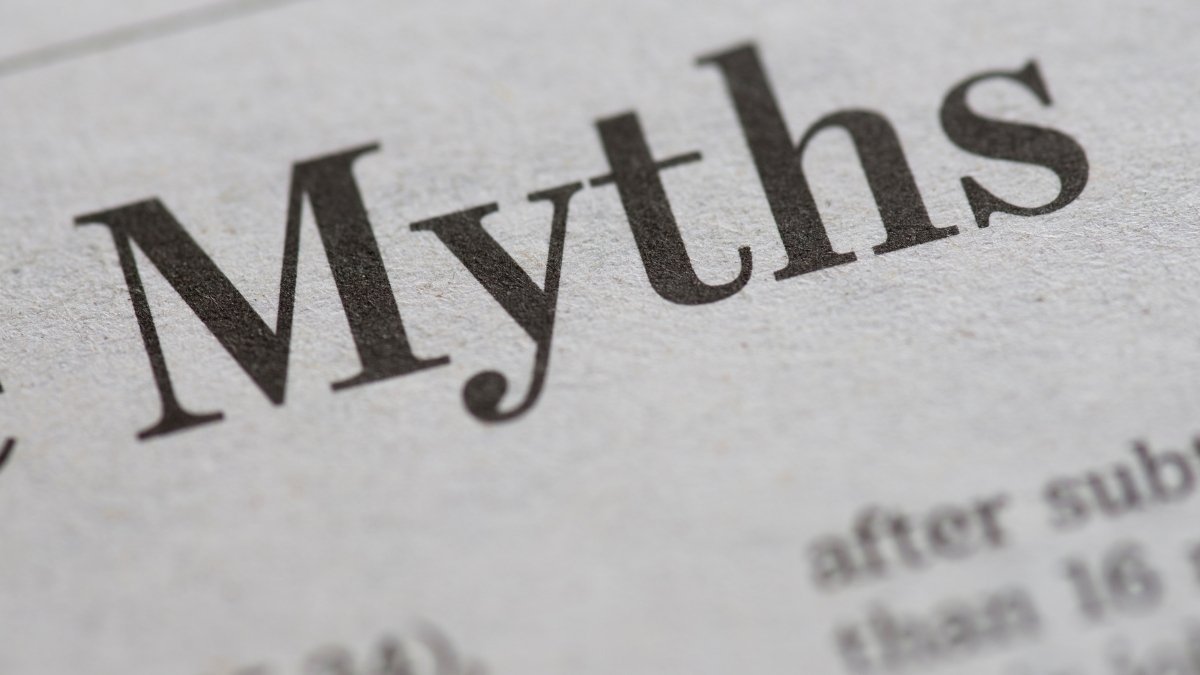
There’s so much misinformation out there. Let’s clear a few things up.
- Myth: A “base tan” will protect me.
- Fact: Nope. A tan is not a sign of health; it’s a sign of DNA damage. It’s your skin cells in trauma, producing pigment in a desperate attempt to protect themselves. A tan offers a pathetic SPF of about 3, which is nowhere near enough. There is no such thing as a healthy tan.
- Myth: I have darker skin, so I don’t need to worry.
- Fact: This is a dangerous one. While more melanin offers some natural protection, anyone can get skin cancer. In fact, it is often diagnosed at a later, more dangerous stage in people of color, partly because of this myth.
- Myth: Sunscreen ingredients are toxic and cause cancer.
- Fact: There is no credible scientific evidence to support this. There is, however, a mountain of evidence that UV radiation causes cancer, and sunscreen is a proven tool to help prevent it. As Dr. Farma states, “Sunscreen has a proven track record and benefit of decreasing the risk of UV exposure”.
- Myth: I can’t get burned in a car.
- Fact: While most car windows block UVB rays (the burning ones), they do not block UVA rays (the aging and cancer-causing ones). That long-term exposure on your left arm and the side of your face during your commute adds up.
Your Shadow Knows Best
The sun gives us life, energy, and vitamin D. It’s not something to be feared, but it does demand our respect. For too long, we’ve relied on confusing rules and guesswork to stay safe.
But you don’t have to guess anymore. You have the simplest, most elegant tool right at your feet. It’s a direct line of communication from the sun to you, telling you exactly when the danger is real.
So, the next time you’re outside, take a moment. Look down. Listen to what your shadow is telling you. It could save your skin—and maybe even your life.



